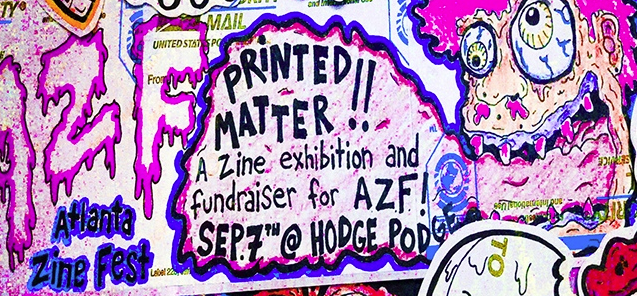Romanian native Alexandra Badiu arrived in Atlanta on the ninth day of the ninth month back in 2015. Nine, she 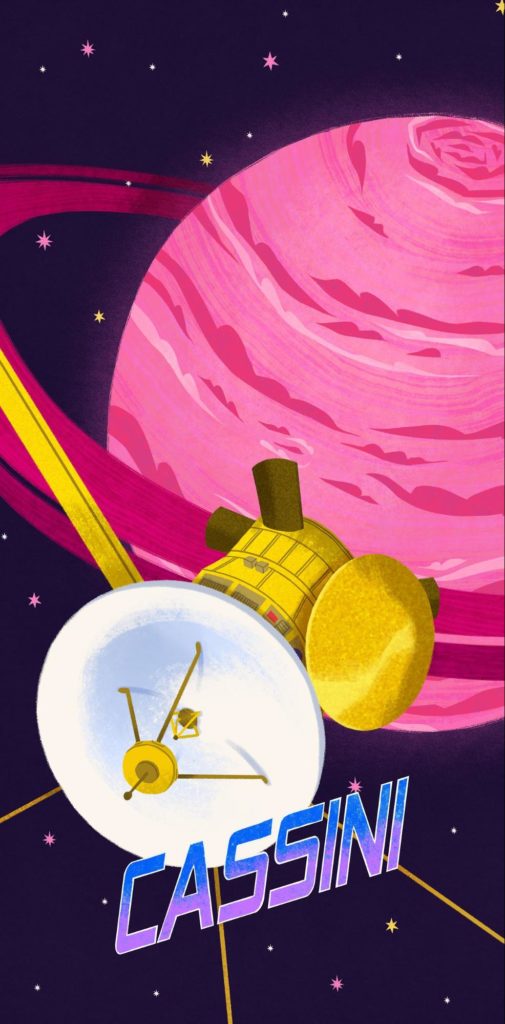 says, is her lucky number, so the artist took this as a good sign. Before arriving here, Alexandra graduated from Anadolu University in Eskişehir, Turkey, with a degree in animation. She then traveled extensively and decided to attend graduate school in Atlanta. She eventually graduated from SCAD with the highest honors — Excelsus Laureate — in May of this year.
says, is her lucky number, so the artist took this as a good sign. Before arriving here, Alexandra graduated from Anadolu University in Eskişehir, Turkey, with a degree in animation. She then traveled extensively and decided to attend graduate school in Atlanta. She eventually graduated from SCAD with the highest honors — Excelsus Laureate — in May of this year.
The hard-working artist already has an agency behind her, connecting her with illustration opportunities for children’s books. She’s also collaborated with some top animation and visual artists in the city through the local animation studio Fern. Her colorful body of work emphasizes her appreciation for folklore and the complexities of culture by focusing on regional nature, myths, legends, and characters, which she believes to be the foundation of any given society.
We talked with Alexandra about her process, the importance of cultural identity, and the difficulties she experiences navigating the Atlanta art scene as a transplant.
CommonCreativ: When did your interest in art begin?
Alexandra Badiu: Since the beginning of time! I went to a private kindergarten in Turkey after my family moved there from Romania for my father’s work. I only knew Romanian at the time. In the beginning, I couldn’t understand anything, so I spent a lot of time alone and I would draw and draw and draw.
The teachers told my mom that I seemed to enjoy drawing and she should encourage that. My mom took me to an atelier (workshop). Since then, I’ve been working on art. I knew I wanted to pursue a career in animation since middle school. I went to an art high school in İzmir, Turkey, one of the most liberal parts of the country, where the community is more opened to the arts. I studied animation for undergrad at the university in Turkey and knew I wanted to do graduate school at SCAD (where I did a masters in illustration).
CC: What’s your creative process like?
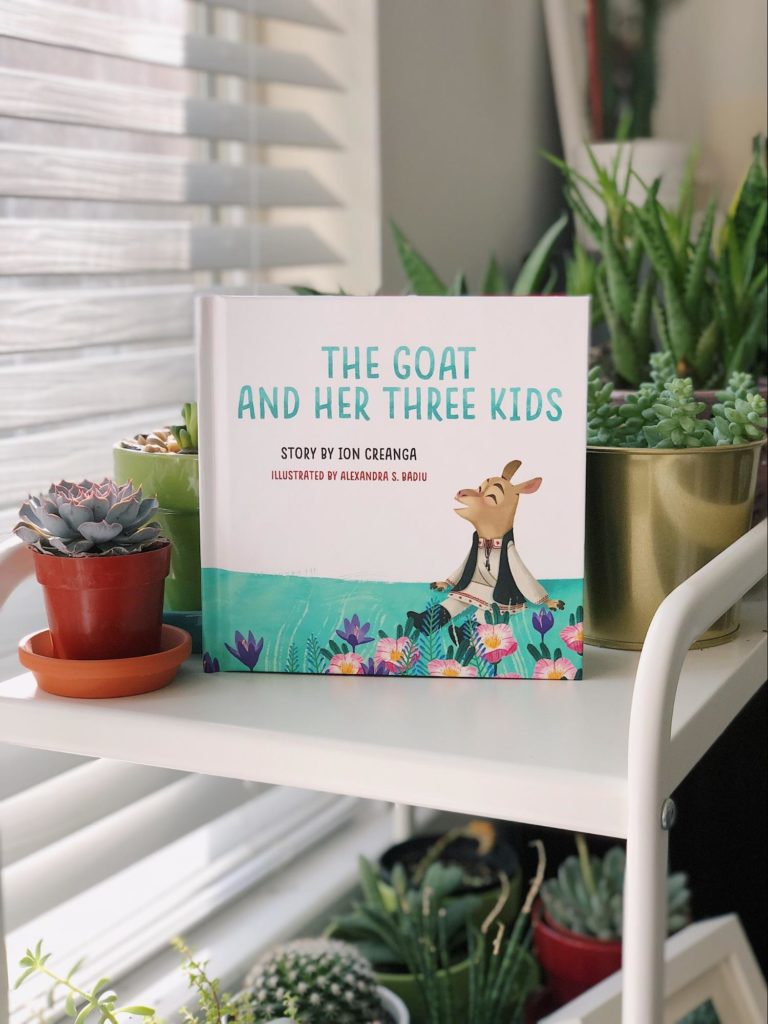 AB: I get a brief [from my agency], they’ll tell me about the book [they want me to illustrate], sometimes they send me a sample of the first couple of pages from the book. They tell me the direction they want to go with and maybe they’ll reference a piece from my portfolio. Usually, it’s either a preference between a more simple, flat approach or a more textural, detailed one. If so, I research the story if I don’t know it. I research the culture of where the story comes from, the motifs, I do some visual mapping. I’ll sometimes go on Pinterest, and search for the folklore of the culture. I love working with folklore, it’s so rich. Every country has amazing folkloric artwork.
AB: I get a brief [from my agency], they’ll tell me about the book [they want me to illustrate], sometimes they send me a sample of the first couple of pages from the book. They tell me the direction they want to go with and maybe they’ll reference a piece from my portfolio. Usually, it’s either a preference between a more simple, flat approach or a more textural, detailed one. If so, I research the story if I don’t know it. I research the culture of where the story comes from, the motifs, I do some visual mapping. I’ll sometimes go on Pinterest, and search for the folklore of the culture. I love working with folklore, it’s so rich. Every country has amazing folkloric artwork.
If the brief isn’t specific about what parts they want illustrated, then I can play around with what’s important to show. After that, I create thumbnails to figure out the compositions and send a few to the clients. It’s easier for me to do that, almost as a storyboard, to see how it’s moving. After that, I’ll do a refined sketch, color compositions (sometimes I’ll do that for myself and send whichever one I like best), and then comes the sketch of the entire book. Part of my process is just going outside and painting. I don’t bring anything to draw, I just go outside with gauche and brushes and focus on colors and light. It’s a very important part of my process and I think it contributes a lot to what I do. I also try to draw every day.
CC: When did you decide to focus on children’s illustrations?
AB: After my first year at SCAD, I realized how much I loved children’s books. I like creating for kids, it’s fun. I was a kid that enjoyed that (I still collect books), and I would like to be a part of giving that to the next generations. I realized then, too, that I could be both an illustrator and a visual developer. In the end, it’s all storytelling and they both go together because it’s about drawing instead of animating. I like creating the worlds.
My thesis, for example, is about Romanian legends. They are mostly about nature and animals. I specifically chose nature elements instead of humans because they’re so focused on morality. I always loved darker motifs, more creepy stuff, but I like to have the flexibility to use more colors and just do different things.
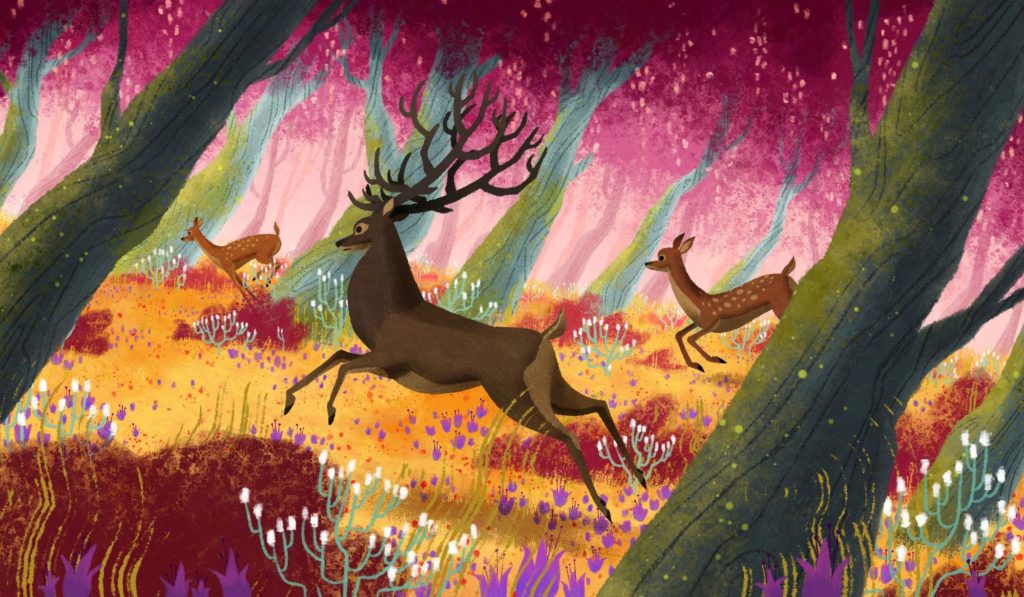
CC: As an immigrant and international artist, how does heritage influence your work?
AB: It has influenced everything. I was a kid that didn’t grow up in her own culture. Even if you look at it from a religious point of view, Romania is Christian and Turkey is mostly Muslim. In the beginning, it was hard to deal with the cultural differences. When I was growing up, I was pushing my Romanian self to the side and becoming more Turkish. I didn’t want to get bullied. I was never ashamed — I still spoke Romanian to my mother. But since I knew very little about its culture, because I only really visited Romania in the summer, it was hard to embrace it. In college, I became more curious. It’s a small country but there is so much there. I liked the Austrian-Hungarian influences in the buildings. The Germanic architecture that’s still there.
It makes me more conscious to understand the architecture, the culture, the clothing of different places. Visually it’s so intriguing and it makes you more interested to learn. It’s definitely what helped me understand my own culture and I want to share that so people become more interested in traveling to Eastern Europe. There is so much there! Their stories are not known and they are such rich cultures. I work to share with people.

Artist Alexandra Badiu
CC: How do you promote yourself as an artist?
AB: I have an agent now. Yay! Astound Agency reached out to me in the summer and it all became official after my graduation from SCAD in May. They work with big publishers and focus on children’s books. As a visual developer, promotion is harder. It’s more of a community, it’s more closed. “You hear about me, I hear about you” type stuff. I have my website, which has my portfolio, and it’s linked in my Instagram.
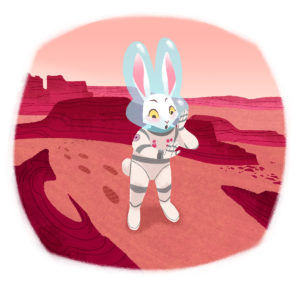 I’m also working on my Instagram. It’s hard. I’m trying to do at least one post a week; I should do one every couple of days, just to keep it more active. Sometimes I’m able to do that when I’m constantly creating but, especially now, I’m working on projects that are closed and I can’t talk about them. In animation, that’s one of the biggest problems, until they become public you can’t even add projects to your resume. With books, it’s usually a couple of months before you can promote it for yourself.
I’m also working on my Instagram. It’s hard. I’m trying to do at least one post a week; I should do one every couple of days, just to keep it more active. Sometimes I’m able to do that when I’m constantly creating but, especially now, I’m working on projects that are closed and I can’t talk about them. In animation, that’s one of the biggest problems, until they become public you can’t even add projects to your resume. With books, it’s usually a couple of months before you can promote it for yourself.
I also use [the online portfolio site] Behance and go out, meet people. I’ve participated in a couple of Drink & Doodle events with ABV Gallery. I feel like I’ve gotten to meet artists that I wouldn’t have found otherwise and connected with a lot of people.
CC: Who are some Atlanta artists you’ve collaborated with or who inspire you?
AB: I met Sam Bass when we worked together on an animation. Overall, as a motion artist, he is a great creative. I hang out at Fern at lot. I actually saw some of their work and it wasn’t until later that I realized they were right here in Atlanta. I’m looking forward to working with them at some point. Even just going over there, the Goat Farm is so great.
I also like Claire Almon, she studied animation and illustration as well, and she’s actually with the same agency as me. She does great characters. I think the artistic community here is more spread out, sometimes I don’t know when artists are from Atlanta. People tend to stick to the artist-friends they know.
CC: What else inspires you?
AB: There are three artists who are very important to me. Klimt is the first one. He is my life. His artwork inspires me so much. Being able to see his work and even going to a gallery in Vienna where he used to do shows, it was amazing being in the same place he was.
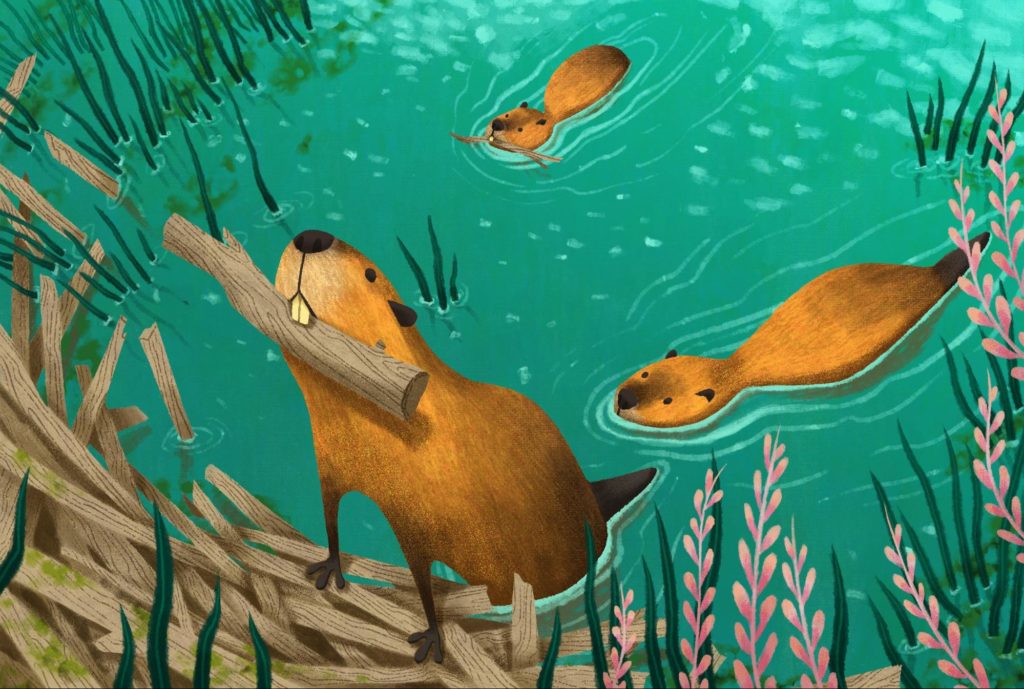
The second is Egon Schiele, Klimt’s student and friend. Egon is Czech, and I was so lucky to be in the town where he was born and walked the streets he had been on. The third is Alphonse Mucha, his motifs are fantastic. They are the main inspirations. I’m also interested in folklore and astrophysics. Science is important. It shouldn’t be unapproachable, something only certain kids can do. It shouldn’t be an elite thing. We should all enjoy science. I love reading astrophysics, even though I don’t have a background in it. Neil deGrasse Tyson is great. I listen to a lot of [his radio show] StarTalk as well. I’m passionate about people who like to educate themselves and crave knowledge and I don’t think the arts and sciences are exclusive to one another.
Conversations inspire me. I like being around people from different cultures. Being at SCAD, I got to meet people from so many different places that I may never have been able to reach otherwise. Being able to open your eyes and listen, it’s the biggest inspiration for us.
CC: What are your thoughts on the Atlanta art scene?
AB: It’s so hidden! I feel lucky that I came to art school in Atlanta and I got to meet artists there. But then if you want to meet other artists, it’s hard to reach and know where things are going on. It takes time here, it’s all word of mouth.
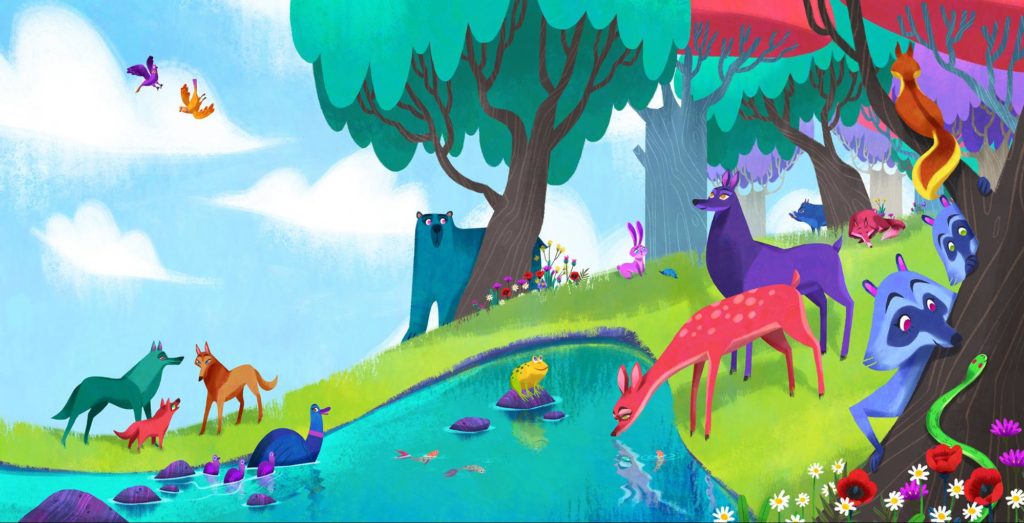
CC: What do you have coming up?
AB: The animation short I worked on as art director and illustrator, Quicksand, screened in Ease ATL’s event hosted by SCAD this October. It’s also been selected to show at the Kinofilm [Festival], Manchester Short Film Festival, and the St. Louis International Film Festival.
By day, I work as an illustrator and animator for Fern (located at the Goat Farm) and hustling with book illustrations by night. I’m obsessed with working!
See more of Alexandra’s work on her portfolio site, Behance, and Instagram.





